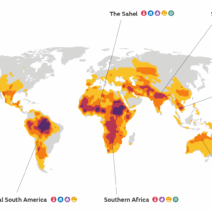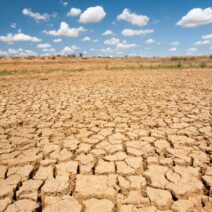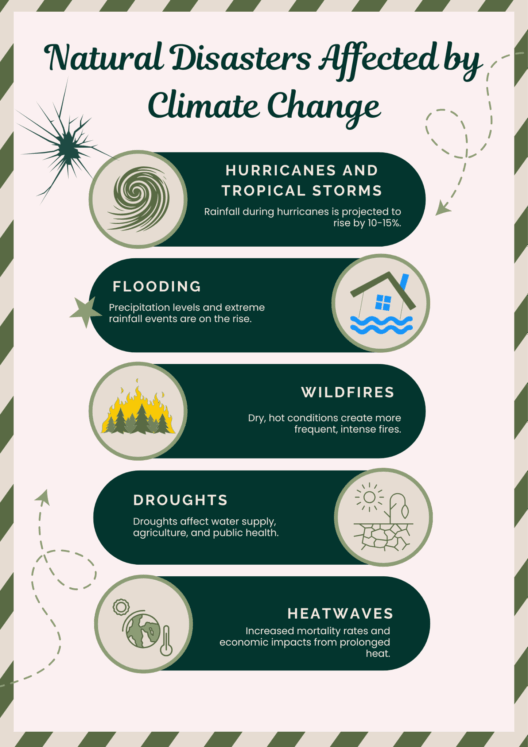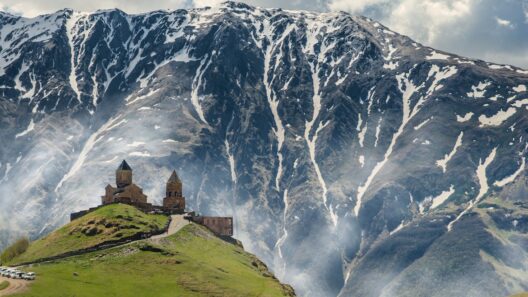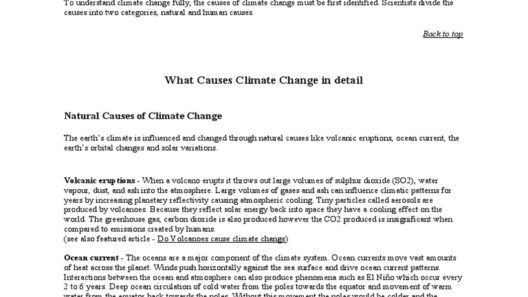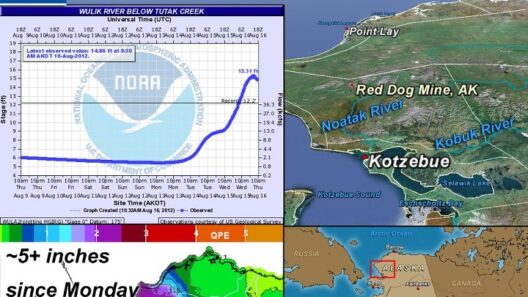The intricate relationship between climate and topography is one that shapes ecosystems, weather patterns, and even human activities. This connection is multifaceted, involving various geographical features and climatic variables. Understanding this relationship requires a deep dive into several key aspects, including how elevation, slope, and geographical location influence climate. This article elucidates the fundamental elements and interactions that create a tapestry of diverse climatic conditions across the globe.
Elevation and Climate
One of the most significant factors influencing climate is elevation. As elevation increases, the atmosphere becomes less dense, resulting in lower temperatures. This phenomenon can be observed in mountainous regions where the climate at the summit differs drastically from that at the base. Terms like “orographic lift” describe how moist air ascends mountain slopes, cooling and condensing to form precipitation. This can lead to lush vegetation on windward slopes while creating arid conditions on leeward sides—a classic example of rain shadow effect.
Consider the Andes in South America, which demonstrate this elevation-induced variability perfectly. At sea level, the coastal regions experience a humid tropical climate, while higher altitudes can plunge into frigid conditions characterized by snow and ice. This stark contrast underscores how elevation is a critical determinant of localized climates.
Latitude and Its Influence
Topography also encompasses the concept of latitude. Latitude plays a pivotal role in determining the angle of sunlight that reaches the Earth’s surface. Areas closer to the equator receive direct sunlight year-round, contributing to warmer climates, while polar regions experience oblique angles, resulting in significantly cooler temperatures.
This latitudinal diversity creates distinct climate zones: tropical, arid, temperate, continental, and polar. Moreover, these zones often align with specific topographical features. For instance, the Sahara Desert’s vast, flat expanses contrast sharply with the lush, mountainous regions of the Andes, illustrating how latitude intertwined with topography fosters varied atmospheric conditions.
Landforms and Microclimates
Landforms significantly contribute to the development of microclimates—small areas exhibiting distinct climatic conditions. Valleys, hills, and depressions can create localized environments different from their surroundings. For example, a valley may trap cool air, resulting in cooler temperatures than the surrounding highlands, significantly affecting local agriculture and biodiversity.
Furthermore, urban environments amplify this connection through the urban heat island effect, where cities experience higher temperatures than surrounding rural areas due to human activities, asphalt, buildings, and reduced vegetation. This climate alteration highlights the interaction of extensive human topography with natural climate dynamics.
Soil Types and Hydrology
Soil composition and hydrological features also play critical roles in linking climate and topography. Different soil types will retain moisture differently, affecting vegetation and, consequently, local climates. For instance, sandy soils drain quickly and may lead to arid landscapes, whereas clay soils retain water, promoting more humid conditions. This relationship is evident in regions like the Great Plains, where the rich, fertile soil supports agriculture and a corresponding climate resilient to variation.
In areas with significant topographic relief, such as river basins, water bodies markedly influence temperature and humidity. The proximity to water can result in milder climates, such as those found along coastlines, where oceans or large lakes moderate temperature fluctuations, creating stable environments for diverse species.
Climatic Zones and Biodiversity
The intertwining of climate and topography results in the creation of unique ecosystems, each thriving under specific climatic zones. Biodiversity is often richer in regions where intricate topographical features meet varied climatic conditions, leading to unique habitats harboring diverse flora and fauna.
For example, tropical rainforests thrive in areas where warm, humid climates combine with rich soil, while the interplay of altitude and moisture in the Himalayas fosters a variety of ecosystems ranging from subtropical forests to alpine meadows. Each gradient of elevation provides a unique niche for species adapted to those specific climatic conditions.
The Impact of Climate Change
As climate change accelerates, its impact on the climate-topography connection is becoming more pronounced. Rising temperatures are altering precipitation patterns and causing glacial melting, which in turn affects sea levels and local weather systems. These changes exacerbate existing challenges and can result in ecosystem disruptions, particularly in regions with fragile climates—the Arctic tundra or coral reef ecosystems, for instance.
Topographical features that once provided stable habitats may no longer serve that purpose as the shifting climate creates conditions inhospitable to endemic species. This transition can lead to biodiversity loss, altering the fabric of these ecosystems and impacting human communities reliant on those natural resources.
Conclusion
The intricate connection between climate and topography reveals a complex interplay of factors that govern ecological diversity and environmental conditions. Elevation, latitude, landforms, and hydrological factors collectively shape climatic patterns across the globe. Understanding this connection is crucial, especially in light of ongoing climate change, as it allows for better predictions, conservation efforts, and a stronger grasp on how to maintain our planet’s rich biodiversity. As we navigate this evolving landscape, recognizing the inherent link between climate and topography is essential in fostering a sustainable future.

